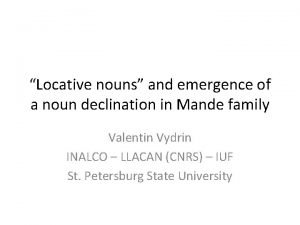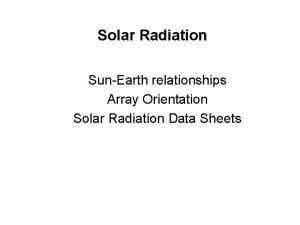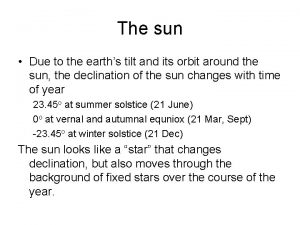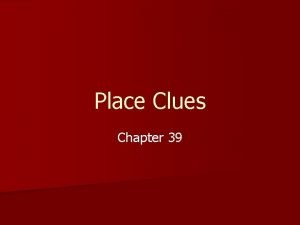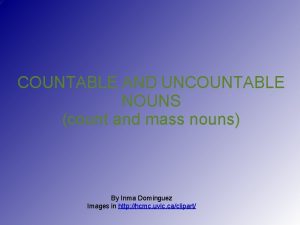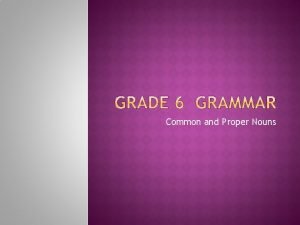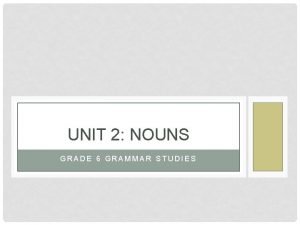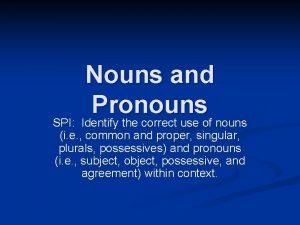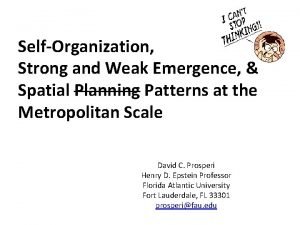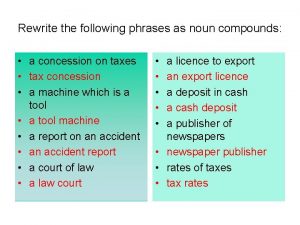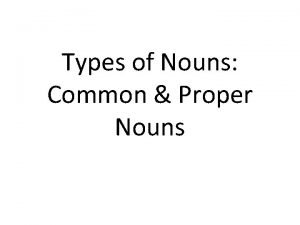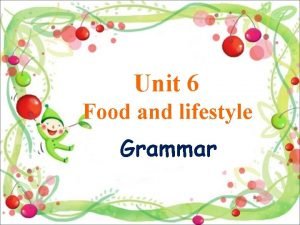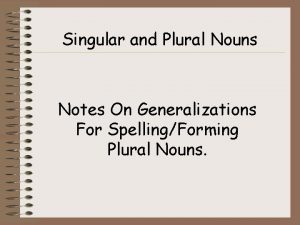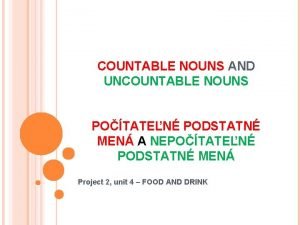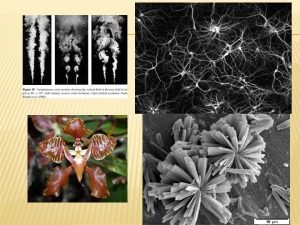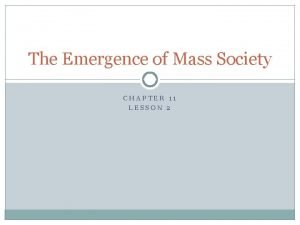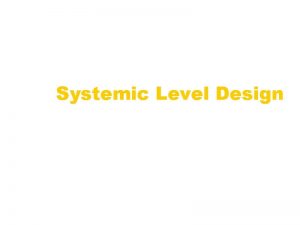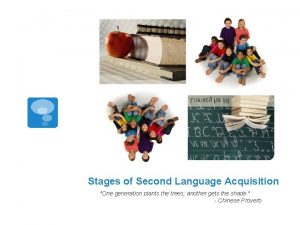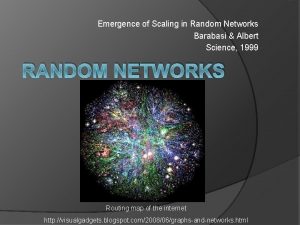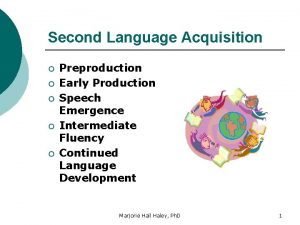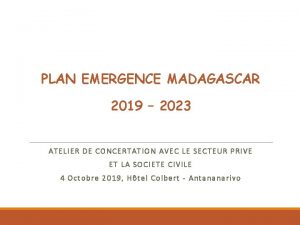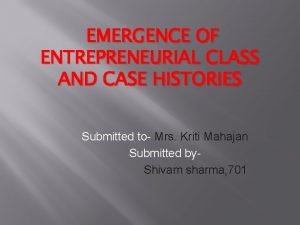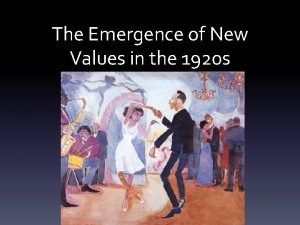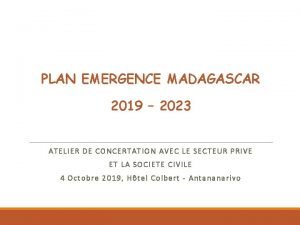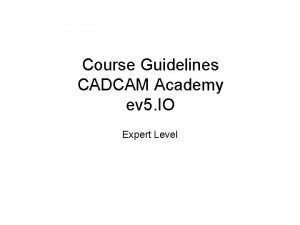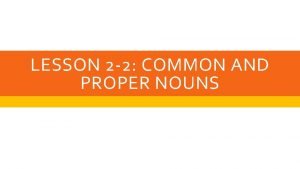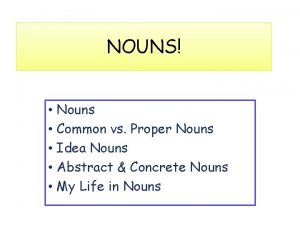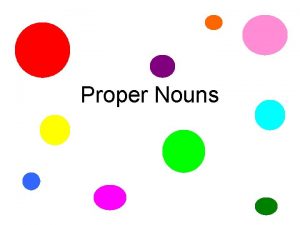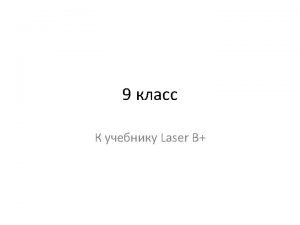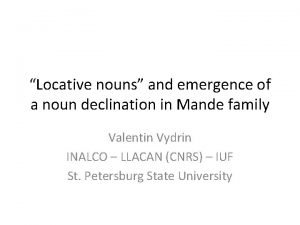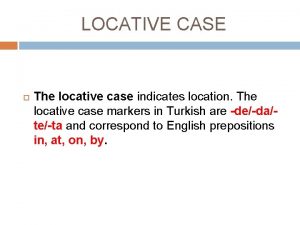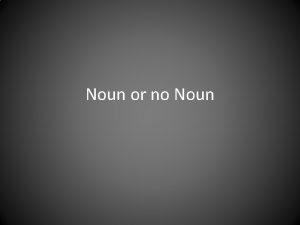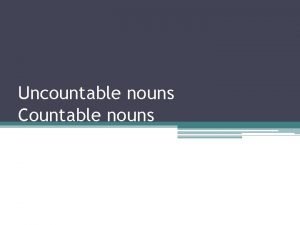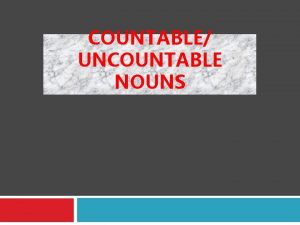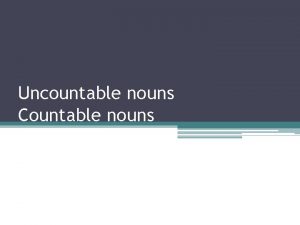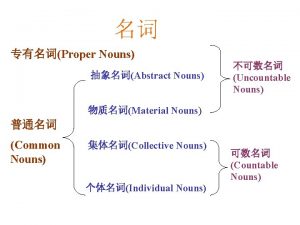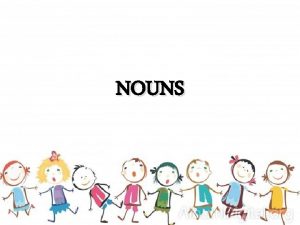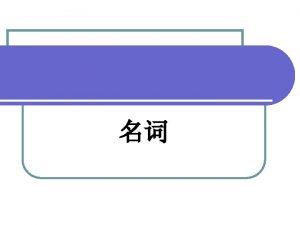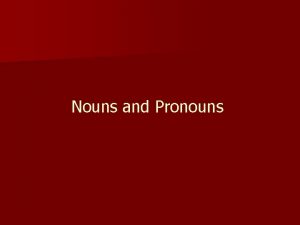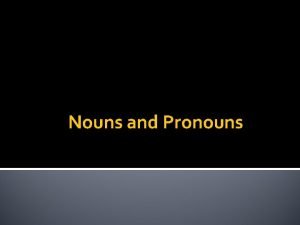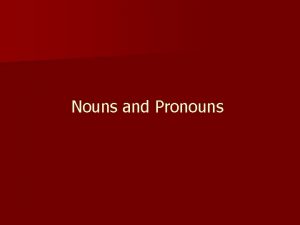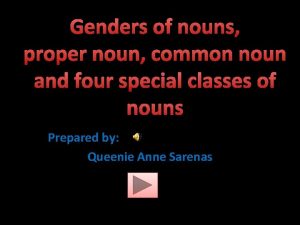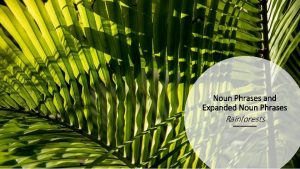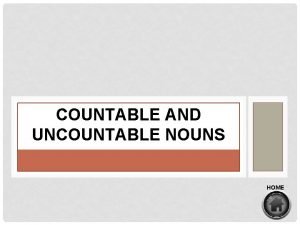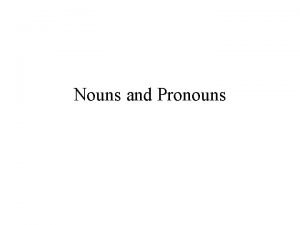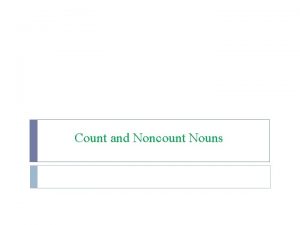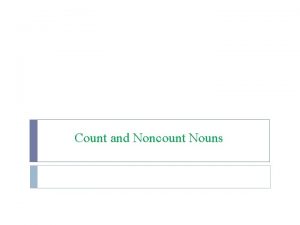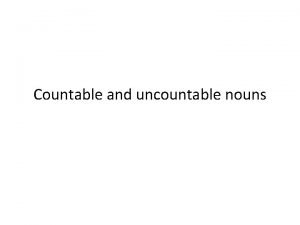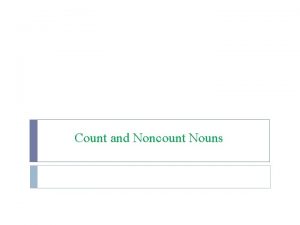Locative nouns and emergence of a noun declination







































- Slides: 39

“Locative nouns” and emergence of a noun declination in Mande family Valentin Vydrin INALCO – LLACAN (CNRS) – IUF St. Petersburg State University

Case systems in the Niger-Congo macrofamily • very rare (and certainly not reconstructable for any proto-level); • especially rare for the nouns (more available for the pronouns). • An exeption: a couple of Western Bantu languages, where cases are expressed by tones [Blanchon 1988; Ko nig 2005].

Mande family

Some charcteristics: • more than 70 languages (Ethnologue 2012) • genetic depth: more than 5000 years • 2 big branches (Western and South-Eastern) subdivided into 11 groups • usually regarded as lacking morphology (no noun classes; TAM meanings are expressed mainly by auxiliary words…).

Rigid word order in Mande • Syntactic functions of NPs are expressed by words order and, for the obliques, by postpositions. The word order (prototypical for the entire family): • Subj - Aux - DO – V – Obl PP

Example: Bambara (1) Mi si-` ye ji -` mi n. cow-ART PFV. TR water-ART drink ‘A/The cow drunk water’. (2) N ye mis i-` gɛ n. 1 SG PFV. TR cow-ART chase ‘I chased the/a cow’. (3) N ye ji ` di mis i-` ma. 1 SG PFV. TR water-ART give cow-ART ADR ‘I gave water to a/the cow’.

A deviation: Obliques without postpositions • Bambara: toponyms (with the exceptions for Ma li: A ta ara Ma li` la ‘He went to Mali’); • a few nouns with locative semantics: so ‘house, home’, da ‘mouth’, tɛ gɛ ‘palm of hand’: (4) N tɛ ta a n fa -` ka so. 1 SG IPFV. NEG go 1 SG father-ART POSS home ‘I won’t go to my father’s home’. • Also in some other languages of the family (Beng, Gban).

Looma (Southwestern group): “locative nouns” without declination • carry a definite article -ʋɛ (cf. nouns of the “neutral class” with the article -y); • appear in the syntactic function of the oblique without postposition; • their form remains unchanged whatever their sytactic function may be. (5) Ko ti ɣa zi a -ʋɛ. REFstone. DEF PRES. COP REFriver-LOC. DEF ‘The stone is in the river’ [Mishchenko, ms. ].

Southern and Southwestern Mande: noun + postposition fusion • Mwan: a couple of “locative nouns” which appear only in the oblique function (historically, fused with locative postpositions) [Perekhvalskaia, ms. ]. • wii ŋ ‘on the head’ < wi ~ wiŋ ‘hair’. (7) Bɔ tɔ beb e o ŋ wii ŋ . bag many be 1 SG. NSBJ head. LOC ‘I have many bags on my head’. • Other “locative nouns” gbɛ paa l oŋ ‛on the shoulders’ , zat a ‛on the back’, (< za ‘space behind’), kwel aa ‛with a load’ (kwe ‛a load’); toponyms.

Kpelle (Southwestern group) 9 nouns have two forms, “basic” and “locative”. The latter results from fusion with postpositions • hu ‘in’: pe le ‘road’ + hu pe le i (6), • mu ‘under’: pɛ lɛ ‘house’ + mu pɛ lɛ ŋ (2), • ɲa ‘on’: ŋwɔ ŋ ‘fire’ + ɲa ŋwɛ a (1). These forms are used mainly in the circumstant position, sometimes in other positions too [Konoshenko, ms. ].

Kla-Dan (Southern Mande) In Kla-Dan, there about 20 “locatives”, i. e. nouns used in the circumstant position without postposition. They result from fusion with postpositions; some of them have two forms: • zi a ŋ ‘on the road’, zi a a ‘at the road’, • ku ɤ ŋ ‘together’, ku ɤ ɤ ‘together’. Most locatives differ from the corresponding nouns formally, but some of them are homonymous with the nouns: glu ‘stomach’, kpo o ‘back’, yɔ ŋ ‘armpit’. “As far as the locatives are few and heterogeneous, it is not worthy speaking of a locative case in Kla-Dan” [Makeeva ms. ].

Dan-Gwɛɛtaa (Southern Mande)

Types of locative nouns in Dan-Gwɛɛtaa • The number: more than 50 in my dictionary (cf. about 770 nouns), toponyms not taken into account. • Two classes: unvariables (do not modify their forms, but can be used in the post-verbal position without a postposition) – only 3 (bɔ ‘initiation’, bɯ , blɯ ‘bush’, ɗi ‘mouth’); with morphlogical cases (the great majority).

Morphological cases • result from fusion of nouns with postpositions or/and with the adverbial suffix -ɗɤ ; • one locative lexeme may have several case forms; • the total number of cases is 6, however, there is no lexeme that would have forms of all the 6 cases.

The common case • Unmarked for some locatives (ya ‘eye’, yʌ ŋ ‘sun’), marked by the suffix –ɗɛ for some others. In the latter case, a common case locative noun form differs from the corresponding nouns: kɔ ɔ ɗɛ ‘house’ (the inner space) - kɔ ‘house’ (the building) zɯ ɯ ɗɛ ‘behind’ – zɯ ‘origin’. • -ɗɛ comes back to the noun ɗɛ ‘place’. • At least some common case forms have incorporated postpositions: gblɯ ɯ ɗɛ ‘on the stomach’ < gblɯ ɓa ɗɛ (ɓa ‘on’).

The common case, syntactic functions • the nuclear arguments (subject, direct object) • the oblique, with a postposition: Gba to yɤ mɛ -nu ɗa ya a ɗi ɤ NOM. M 3 SG. EXI human-PL save-NTR yesterday si ɤ gɔ. fire. CMM PP ‘Yesterday Gbato saved people from the fire’. • dependent noun in genitive-like nominal constructions. Ya ɗo gu ŋ -ɗɛ kwa ŋ -ɗɤ. 3 SG. PRF go sacred. house-CMM compound-LOC ‘He went to the court of the sacred house’.

The locative case • the most frequent among the oblique cases (about ¾ of all the locative nouns); • rarely, suffixless; • most often, formed by the suffix -ɗɤ (replacing the common case suffix -ɗɛ ); • often enough, the noun base is also modified. Common case Locative case Translation ɓla a ɗɛ ɓla a ‘farm, field’ gɛ ŋ ɗɛ gɛ ŋ ɗɤ ‘foot/feet, leg(s)’, ke e ɗɛ ke e ɗɤ ‘on the occiput’

The origin of the locative case form • seemingly, N + postposition ɓa ‘on’ or (less frequently) gɯ ‘in’ + a productive adverbial suffix -ɗɤ (cf. wa a ɗɤ ‘imitation of the noise of rain’, to ŋ ɗɤ ‘never’, etc. ). In fact, -ɗɤ can be characterized as a marker of the circumstantial function. Therefore: gwi ŋ ɗɤ ‘on the head’ < *gwi ŋ -ɓa -ɗɤ.

The use of the locative case • The oblique function: Ma ŋ zi i wo ya to o -ɗɤ. dɔ n machine voice 3 SG. PRF put 1 SG. NSBJ ear. LOC ‘The noise of engines torments my ears’. • More rarely, dependent noun in a genitive-like construction: kee ɗɤ yua occiput-LOC illnessIZF ‘disease of occiput’

The inessive case • Results from fusion of the noun stem with the postposition gɯ ‘in’. • Manifests itself most often as copying of the final vowel of the stem and extrahigh tone: si ɤ ‘fire’ si ɤ ɤ ‘in the fire’, ko ‘one another’ – ko o ‘one in(to) another’. • Of rare occurrence: is attested for 9 locative nouns only. • In some contexts, in free variation with the locative case.

The superessive case • Second in frequency among the oblique cases (about ¼ of all the locative nouns). • Originates in the fusion of the noun stem with the postposition ɓa ‘on’ (a surface which is not necessarily flat and/or horizontal). • Manifests itself in copying and (often) modification of the stem vowel + tonal lowering at the end: kɔ ɔ ‘house’, gɛ gɛ ɛ , gæ æ ‘leg, foot’, sɛ si a a ‘land, earth’.

The adessive case • Attested in 2 lexemes only: kɔ ɔ ‘hand’ zi a a ‘road’ • Results from fusion with the postposition ta ‘on’ (a flat horizontal surface).

The comitative case • Results from fusion with the comitative – instrumental – equative – locative postposition ka. • Manifests itself as copying of the stem vowel and tonal raising: kɔ ɔ ‘hand’ gɛ gɛ ɛ ‘leg, foot’ • Attested on 6 lexemes only.

Plural forms for the oblique cases • For many locative nouns, plural forms cannot be derived for the locative case. • When they are accepted, various models are applied: • R-LOC-CMM-PL PP: Wo dɔ -si ʌ ble e -ɗɤ. 3 SG. EXI stop-DUR farm. edge-LOC ‘They stopped at the edge of the farm’. Wo dɔ -si ʌ ble e -ɗɤ -ɗɛ ɗu gɯ. 3 SG. EXI stop-DUR farm-edge-LOC-CMM PL in ‘They stopped at the edges of the farms’.

• Otherwise, just a common case form can be used: kɔ i ɗɤ ‘at the hamlet’ kɔ i ɗɛ -nu gɯ ‘at the hamlets’ • Some locative nouns may have variants of plural with or without suffixes: ɓla a ‘in the farm. SG. LOC’ ɓla a -ɗɛ -ɗu gɯ ~ ɓla a -ɗu gɯ ‘in the farms’

Neutralization of the locative case with determiners Mi nʌ ya nʌ , a gɔ ɗɛ ɗɤ man this FOC 3 SG. NSBJ head leaf be flɤ -sɯ ka pɤ ɗɛ ya ’ gɯ. whiten-GER with village. CMM this-3 SG. NSBJ in ‘This is the man whose hair turned grey in this village’. (cf. a locative form without determiner: A gɔ ɗɛ ya flɤ pɤ ɗɤ ~ plɤ ɤ. ‘His hair has turned grey in the/a village’. )

Selectivity of the case forms • Case forms are no more mere equivalents of the combinations of nouns with postpositions. • Ya wlɤ ku sɔ ɔ . • 3 SG. PRF mortar catch REFL. SG tooth. COM • ‘He has bitten a mortar’. • Ya wlɤ sɯ ɤ sɔ ka. • 3 SG. PRF mortar take REFL. SG tooth with • ‘He has raised a mortar with his teeth’.

Ba a ɓa a ɓo sɛ ɛ. cassave ART 3 SG exit earth. IN ‘Extract cassava from the earth’. Ɗɛ kpɒ ɒ yi do ka pɤ -ɗɛ ɓa day one with village-CMM certain ɤ Ɓɔ ɔ si i -ɗu gɔ sɛ gɯ … REL. 3 SG. CNJ Burkinabe-PL POSS. OBL earth in

Possessive marker: case agreement? • Opposition of alienable and inalienable nouns (otherwise, free nouns and relational nouns). free / alienable nouns are connected to the possessor with a connector: ɗʌ ɓa gwɛ ɛ ‘child’s cassava’ • Relational / inalienable are connected without connector: ɗʌ gɛ ‘child’s leg’

Two connectors • The default connector is ɓa (from the superessive postposition). Ya ɤ ɓa sɔ pɛ ɗa a ka vi o o ɗɤ. 3 SG. PRF REFL. SG POSS cloth split knife with snip-snap He has cut his fabric with a knife by one sharp strike. • When a possessive construction with a head locative noun is in the oblique position, the connector gɔ is used instead: Ya ɗo ɤ gɔ pɤ ɗɤ. 3 SG. PRF go REFL. SG POSS. LOC village. LOC ‘He went to his village, .

The connector gɔ : not only with locative case forms • With regular nouns (caseless): Yɤ ga ɤ gɔ ɗi i ta. 3 SG. EXI dieNTR REFL. SG POSS. LOC bed on He has died in his bed. • With locative nouns in cases other than locative: Ya se ŋ zi ɤ Yɔ gɔ kɔ ɔ. 3 SG. PRF charcoal pass Yo POSS. LOC house. SUP ‘He left traces of charcoal on the wall of Yo's house’.

Competition between ɓa and gɔ • The possessive connector gɔ can be always substituted by ɓa. • There seems to exist a pragmatic difference between both connectors: gɔ is more formal, ɓa is more affectionate. • gɔ is rather an autonomous marker of the oblique function (jointly with the possessive menaing), rather than a true case agreement marker.

Reduplication of the oblique case forms • In Dan-Gwɛɛtaa, reduplictaion of adverbs and postpositions is possible, with the meaning of intensity and/or duration of the situation. (a) Ka ya ŋ zɯ. 2 PL. IMP sit 1 SG. NSBJ around • ‘Sit down around me’. • Ka ya ŋ zɯ -zɯ. • 2 PL. IMP sit 1 SG. NSBJ around~INT • ‘Sit down around me (in a tight circle)’.

The same model of reduplication for the locative nouns • only oblique case forms can be reduplicated, never a common case form; • the locative case form can omit the suffix -ɗɤ ; • the reduplications expresses a characteristics of the predicate.

Intensive character of the action: yɤ zi ɤ kɤ ɗɛ ɛ -ɗɛ CONS. 3 SG. CNJ passNJ again public. square-CMM blee ɗɤ … farm. edge-LOC ‘… he passes at the bord of the public square…’. A ɗo ɗɛ ŋ ɗɤ , a kʌ 1 SG. CNJ goJNT hamlet-LOC 1 SG. EXI RETR zi ɤ blee ~ blee a dɤ ŋ ɗu passNTR farm. edge. LOC~INT 1 SG. CNJ trap-PL ga. lookJNT ‘When I went to the farm, I passed by the edge very meticulously and examined the traps’.

Permanent action/situation Ɓa gbɛ -ɗʌ yɤ kwɛ ŋ -ɗɤ. 1 SG. POSS dog-DIM 3 SG. EXI yard-LOC ‘My dog remains constantly in the yard’. Ɓa gbɛ -ɗʌ yɤ kwɛ ŋ ɗɤ ~kwɛ ŋ -ɗɤ , 1 SG. POSS dog-DIM 3 SG. EXI yard-LOC~INT yaa ɗo ɗɛ ɓa gɯ. 3 SG. NEG. IPFV go place certain in ‘My dog is constantly in the yard, it does not go anywhere’.

Reduplication of obliques with postpositions Yɤ zi ɤ yʌ ŋ ɗɛ. ɤ ɓa kwɛ ɛ ka 3 SG. EXI passNEUT REFL. SG POSS load with sun before ‘He passes with his load under the sun’. Bɛ ɗɛ ga wo ɗɔ ɔ -dɔ -ɓɛ -ɗu drug bone market-stand-humanIZF-PL 3 PL. EXI zi ɤ a ka yʌ ŋ ɗɛ. passNTR 3 SG. NSBJ with sun before ‘Drug sellers pass all the time under the sun’.

What is the status of the post-verbal complexes apt to reduplicate? • • - yʌ ŋ -ɗɛ ‘under the sun’ (litt. ‘before the sun’), yʌ ŋ -gɯ ‘in the daytime’ (litt. ‘in the sun’), kɔ -ɗi ɤ ‘in the hands’ (litt. ‘before the hand’), sɔ -pi ɤ ‘by the teeth’, etc. locative nouns? adverbs? compound postpositions?

Conclusion • The case system in Dan-Gwɛɛtaa is emergent: - the paradigm is globally defectuous (not a single locative noun with a full paradigm; 4 out of 6 cases are rare; poor compatibility of oblique cases with plural marker and other determiners); - only peripheral cases are marked, the nuclear cases are not distinguished.
 Locative noun examples
Locative noun examples Peak sun hours
Peak sun hours Declination
Declination Magnetic declination calculator
Magnetic declination calculator Catch declination
Catch declination Collective noun for cereal
Collective noun for cereal Accusative place to which
Accusative place to which Mass nouns examples
Mass nouns examples Paragraph for common and proper nouns
Paragraph for common and proper nouns Unit 2 nouns lesson 7 nouns proper and common answer key
Unit 2 nouns lesson 7 nouns proper and common answer key Count nouns and noncount nouns
Count nouns and noncount nouns Brainpop nouns
Brainpop nouns So&e
So&e Make compound nouns out of the following phrases
Make compound nouns out of the following phrases Mangoes countable or uncountable
Mangoes countable or uncountable Proper nouns vs common nouns
Proper nouns vs common nouns Lifestyle countable or uncountable
Lifestyle countable or uncountable Singular and plural list
Singular and plural list Abrigo es singular o plural
Abrigo es singular o plural Potaten
Potaten Emergence theory
Emergence theory Lesson 2 the emergence of mass society
Lesson 2 the emergence of mass society Ion storm
Ion storm Stages of language development
Stages of language development Emergence of scaling in random networks
Emergence of scaling in random networks Speech emergence
Speech emergence Plan emergence madagascar 2019-2023 pdf
Plan emergence madagascar 2019-2023 pdf Emergence netflix
Emergence netflix Emergence of entrepreneurial class in india
Emergence of entrepreneurial class in india The emergence of new values
The emergence of new values Plan emergence madagascar 2019-2023 pdf
Plan emergence madagascar 2019-2023 pdf Itero göteborg
Itero göteborg Paul ruthman committee
Paul ruthman committee The emergence of mass society
The emergence of mass society Proper noun of subject
Proper noun of subject Nouns project
Nouns project Abstract noun and concrete noun worksheet
Abstract noun and concrete noun worksheet Proper noun of books
Proper noun of books What is a noun clause
What is a noun clause Prefer noun
Prefer noun
